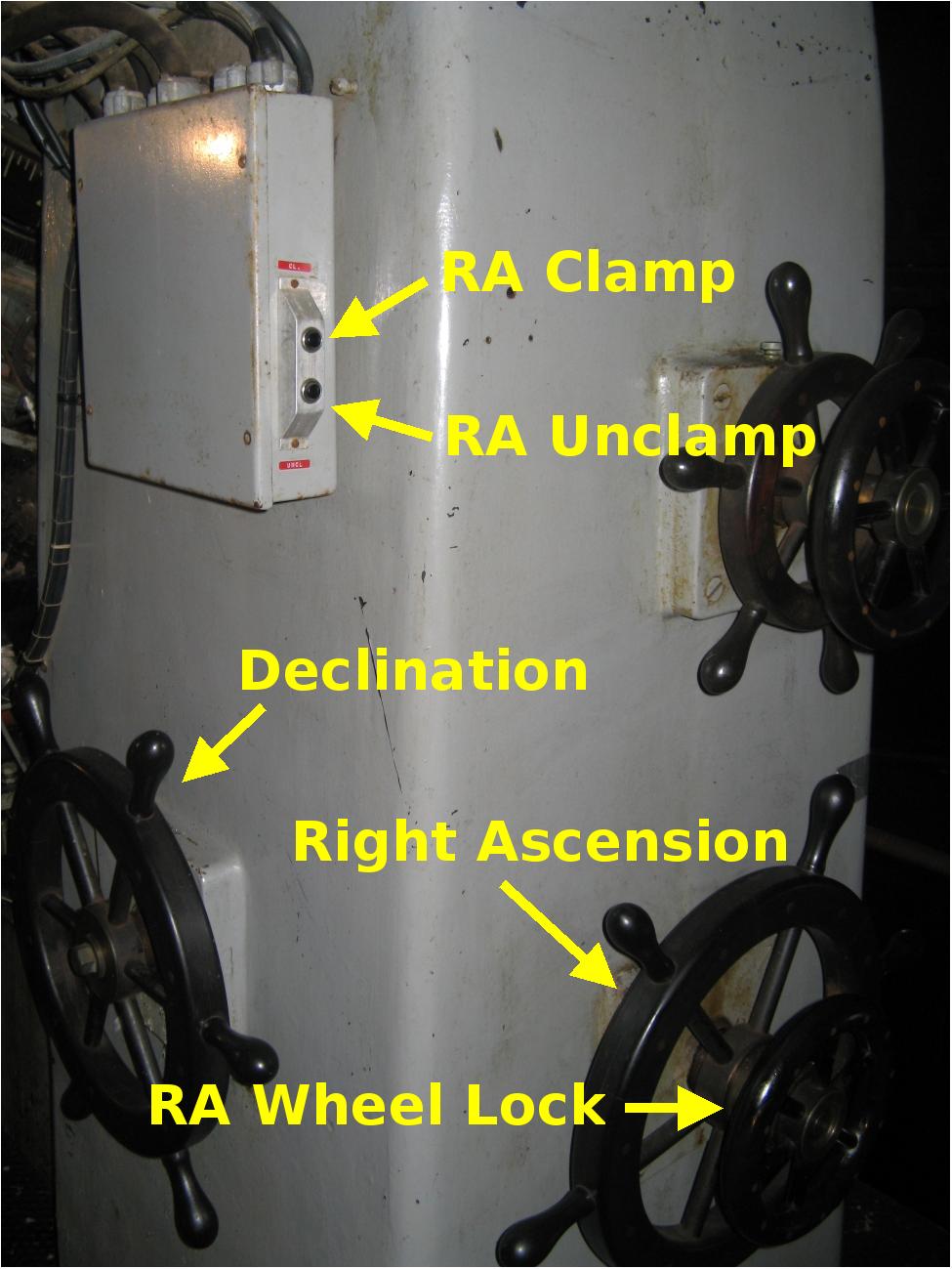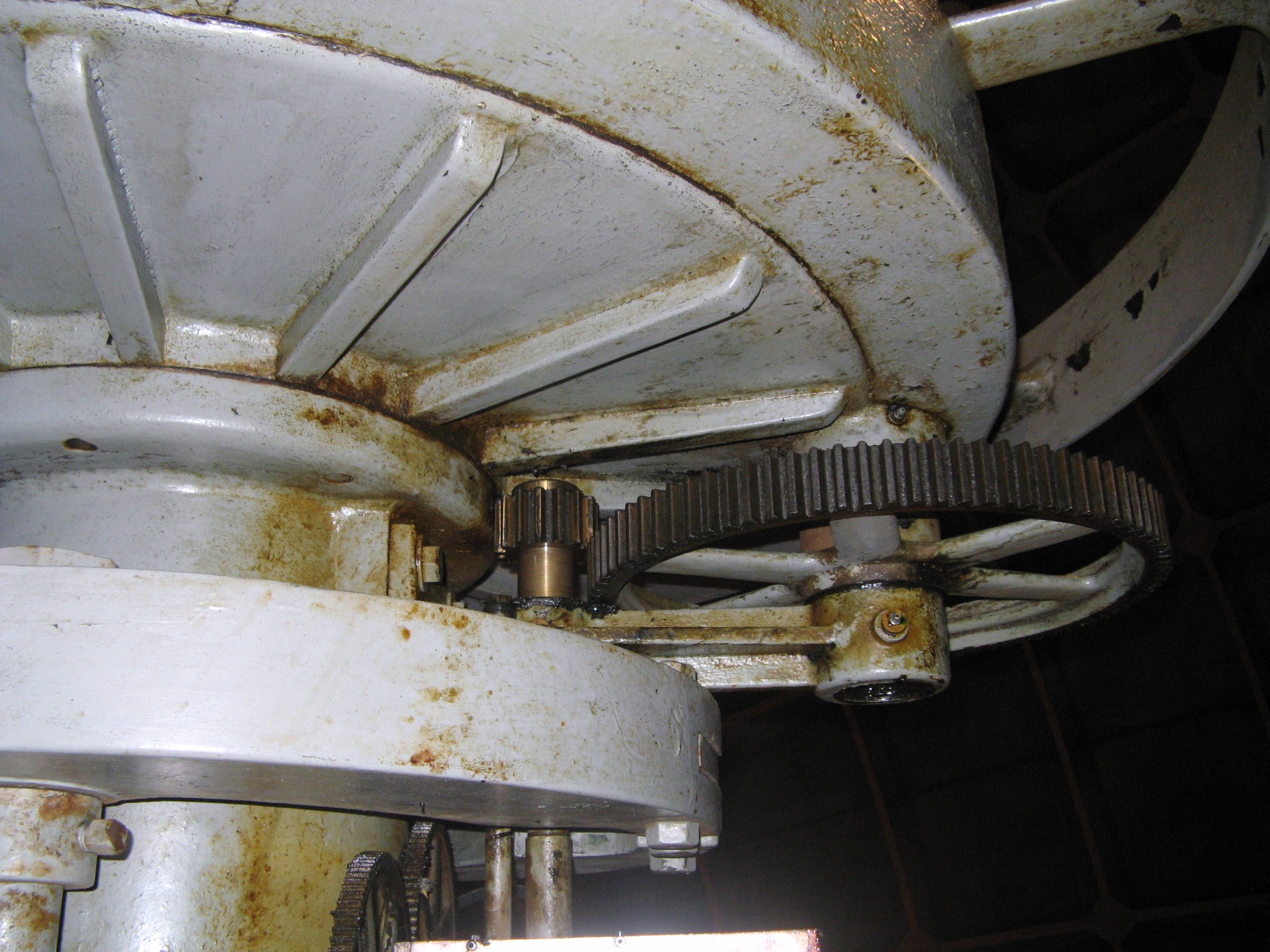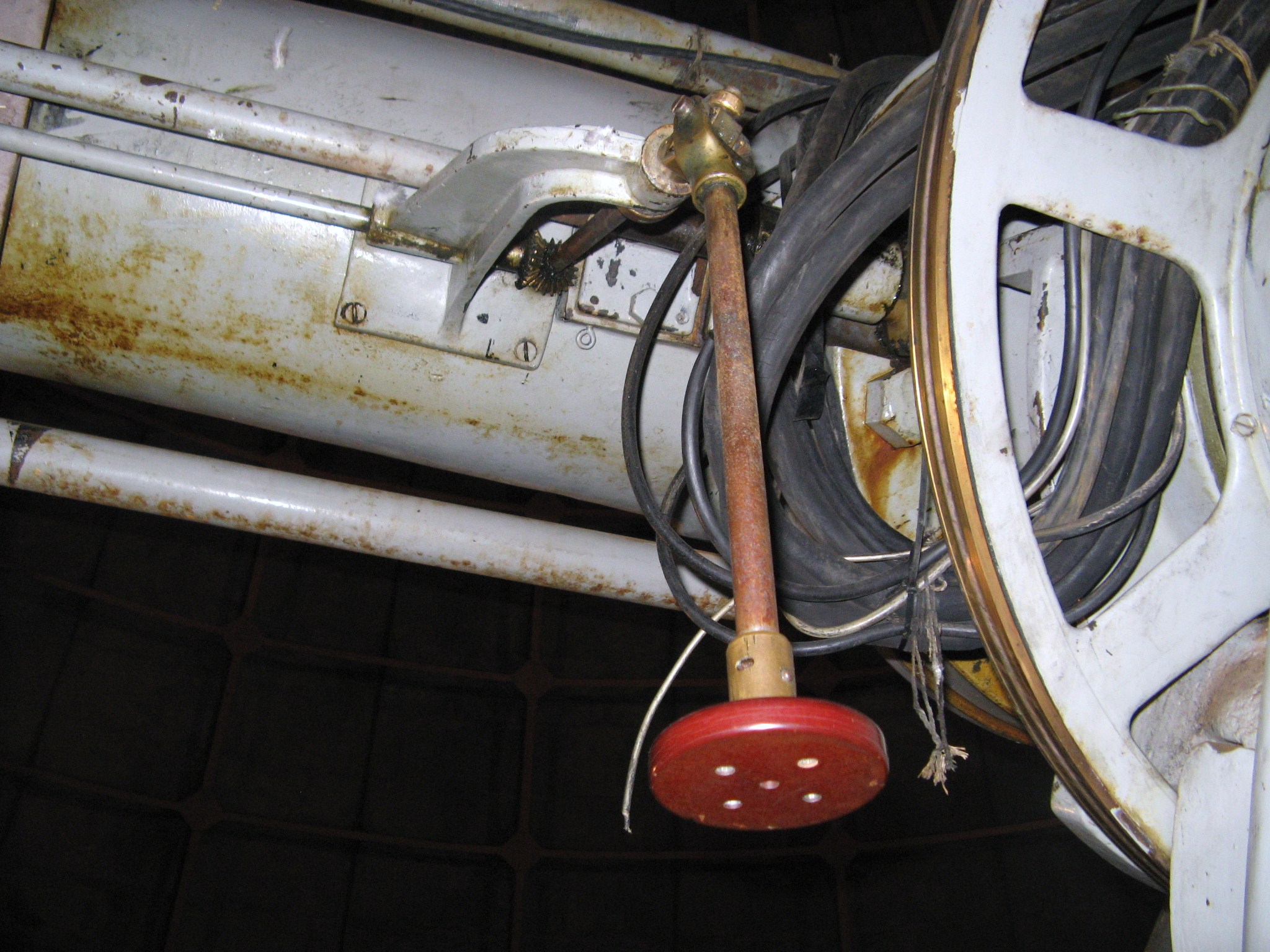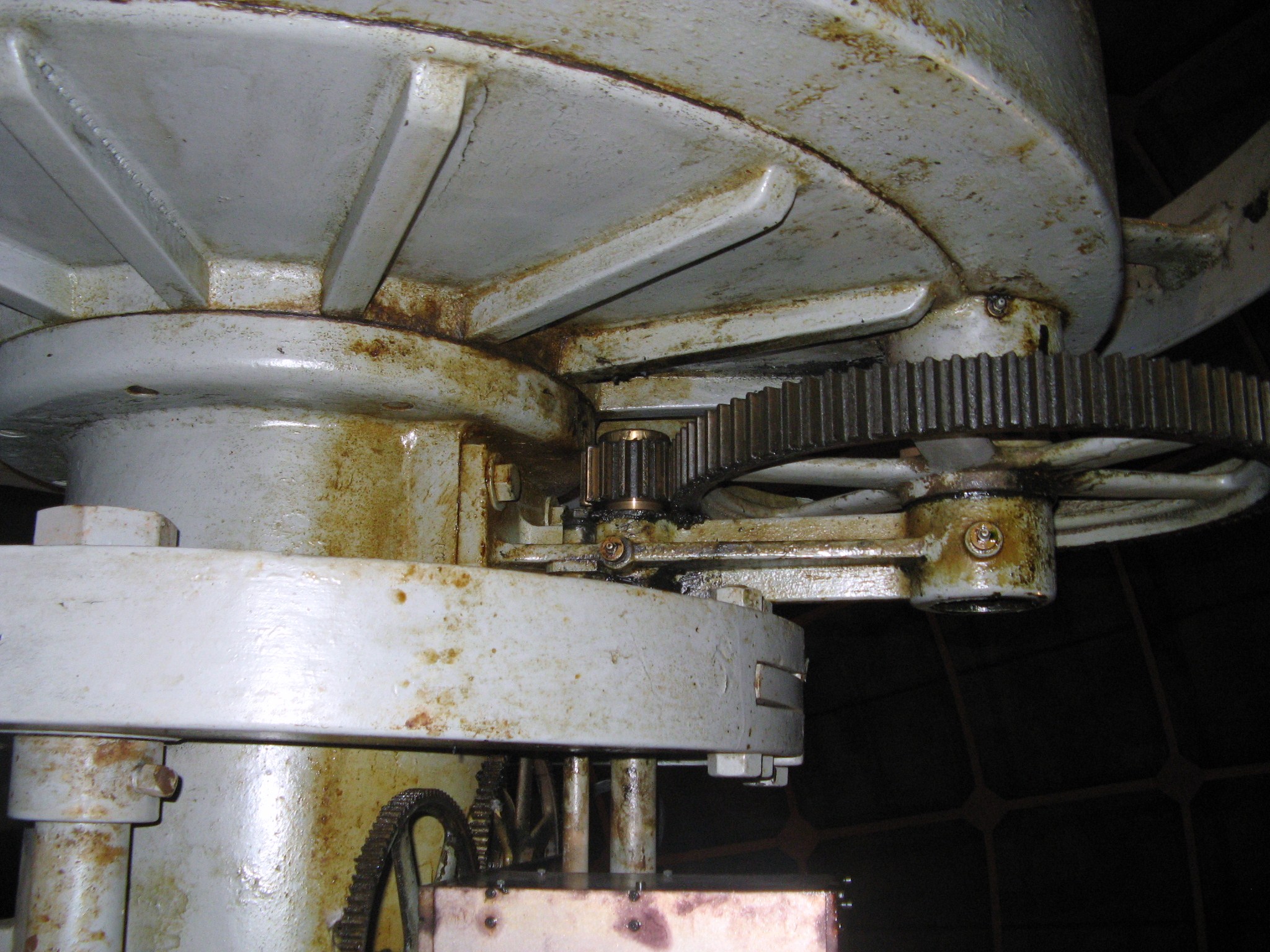|
The telescope can be operated from its nominal position (on the East
side of the pier) or it can be moved to the West side of the pier.
The procedure for moving the telescope from the East to West side of
the pier (or vice versa) is called reversing the telescope. There are
two ways of reversing the telescope, from the floor and from the pier.
The former is mentioned here mainly for completeness but it is
not to be attempted by any observers other than Staff
Astronomers. Described below is how one reverses the telescope via
the ship's wheel controls on the telescope pier. While reversing from
the pier it is possible that one will only have to move the telescope
in RA. The technique mentioned here describes the full procedure of
moving both RA and Dec axes to cross from the East to West side of the
pier.
Note: It is easier and safer to turn on the white dome lights
when doing the following procedure. If that is not possible due to the
desired target object (e.g. object is dim), then have a helper keep a
red light on the end of the telescope during the reversal procedure.
- When it is necessary to reverse the telescope one starts out by
moving the eyepiece end of the telescope to the south-southeast side
of the pier with the floor at its upper limit (pointing the telescope
to the NNW).
- Clamp the telescope in RA, but leave the declination unlocked.
- At the ship's wheels on the pier, engage the RA wheel by turning
the center wheel clockwise (Figure 1) until it stops. Once the RA
wheel is locked, unclamp the RA clamp. Be sure to keep a hand on
the RA wheel in case the telescope starts moving once unclamped.
- Slowly and carefully move the telescope so that the telescope
tube mount point is on the West side of the pier (the main
counterweights, Figure 5, will move to the East side of the pier as
you do this).
- Clamp the RA axis.
- Disengage the RA wheel by turning the center wheel
counter-clockwise. When properly disengaged the large RA ship's wheel should
move freely without moving the telescope.
- Engage the Declination ship's wheels (Figure 1) by turning the
Declination gear handle (red hand crank in Figure 3)
counter-clockwise. This handle is hanging down from the telescope at
the north end of the pier. This mechanism moves a gear into place near
the main telescope counterweights (Figures 2 and 4, showing out and in
positions, respectively) so that
the ship's wheels will move the declination axis.
- Begin to slowly turn either of the Declination ship's wheels so
that the eyepiece end of the telescope is easily reachable from the
floor. Keep your eye on the end of the telescope to make sure you
don't crash it into the floor or other obstacle.
- Disengage the Declination ship's wheels by turning the
Declination gear handle clockwise. Make sure that the gear is fully
disengaged, otherwise binding can occur and make telescope motion
difficult. The Declination ship's wheels should move freely without
moving the telescope when properly disengaged.
- Go back to the floor, unclamp RA and move telescope to the target's
RA and Dec.
To park the telescope or move it back to the East side of the
pier, repeat the above procedure except move the telescope in the
opposite direction (West to East, instead of East to West).
|

Figure 1: Pier ship's wheels and RA clamp.

Figure 2: Declination gear in the out position

Figure 3: Declination gear handle

Figure 4: Declination gear in.

Figure 5: Counter Weights
|